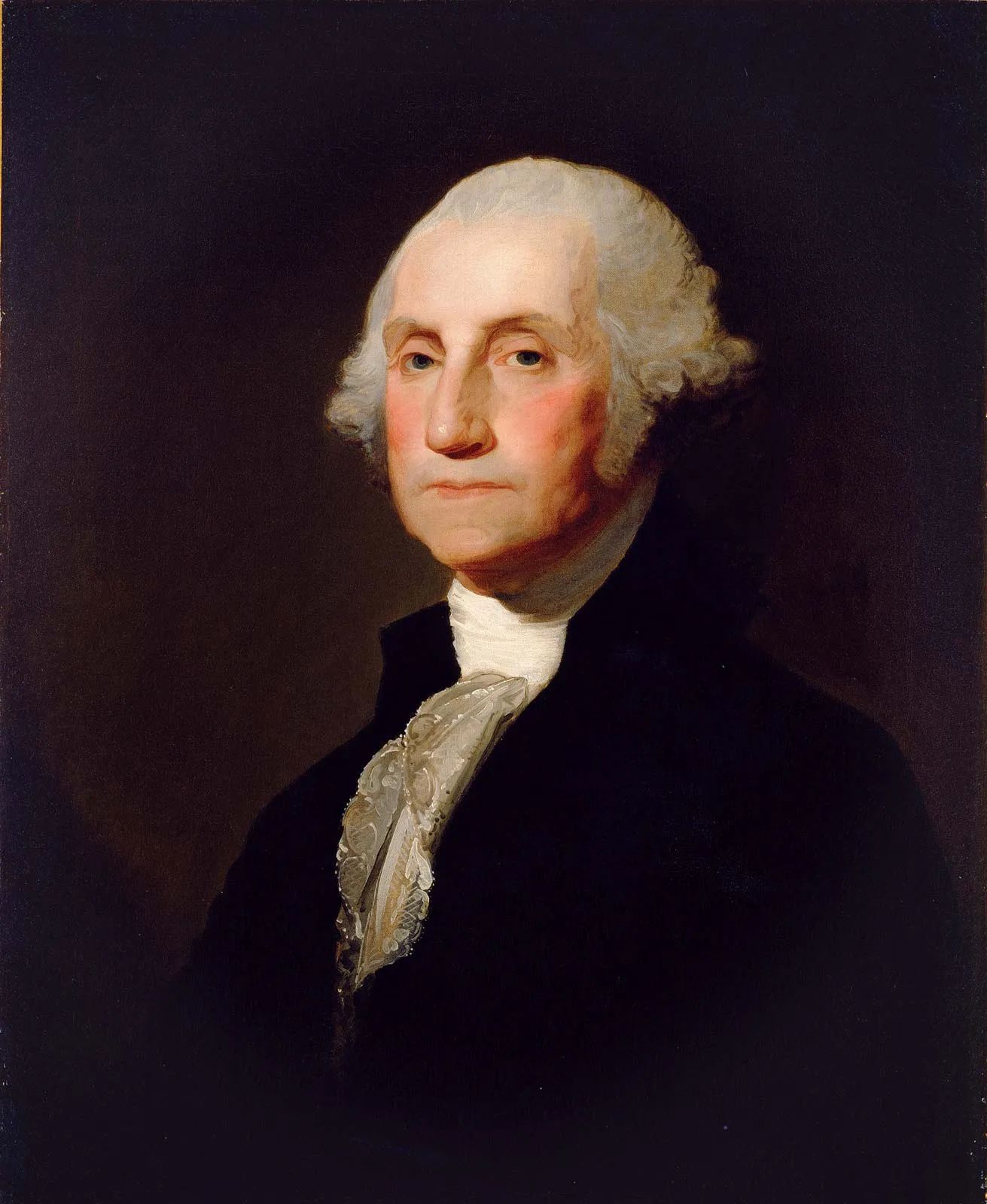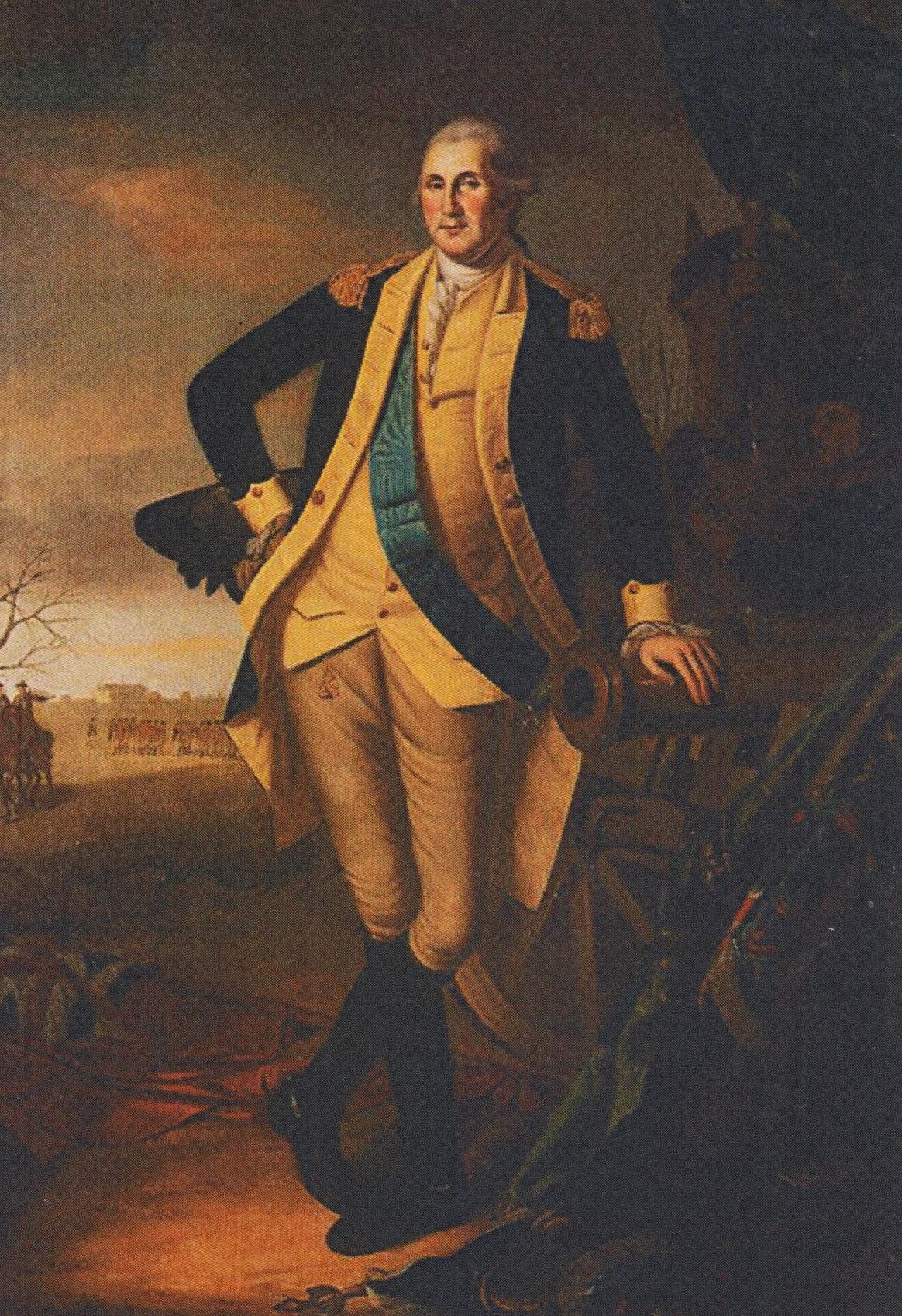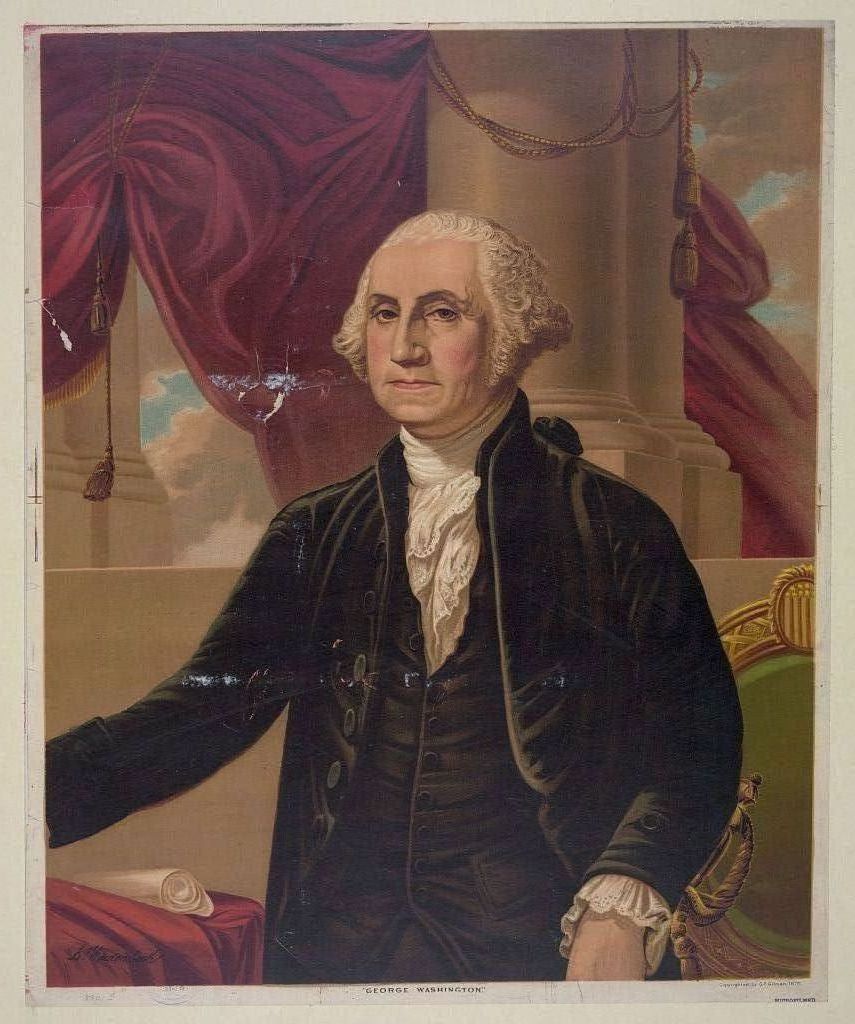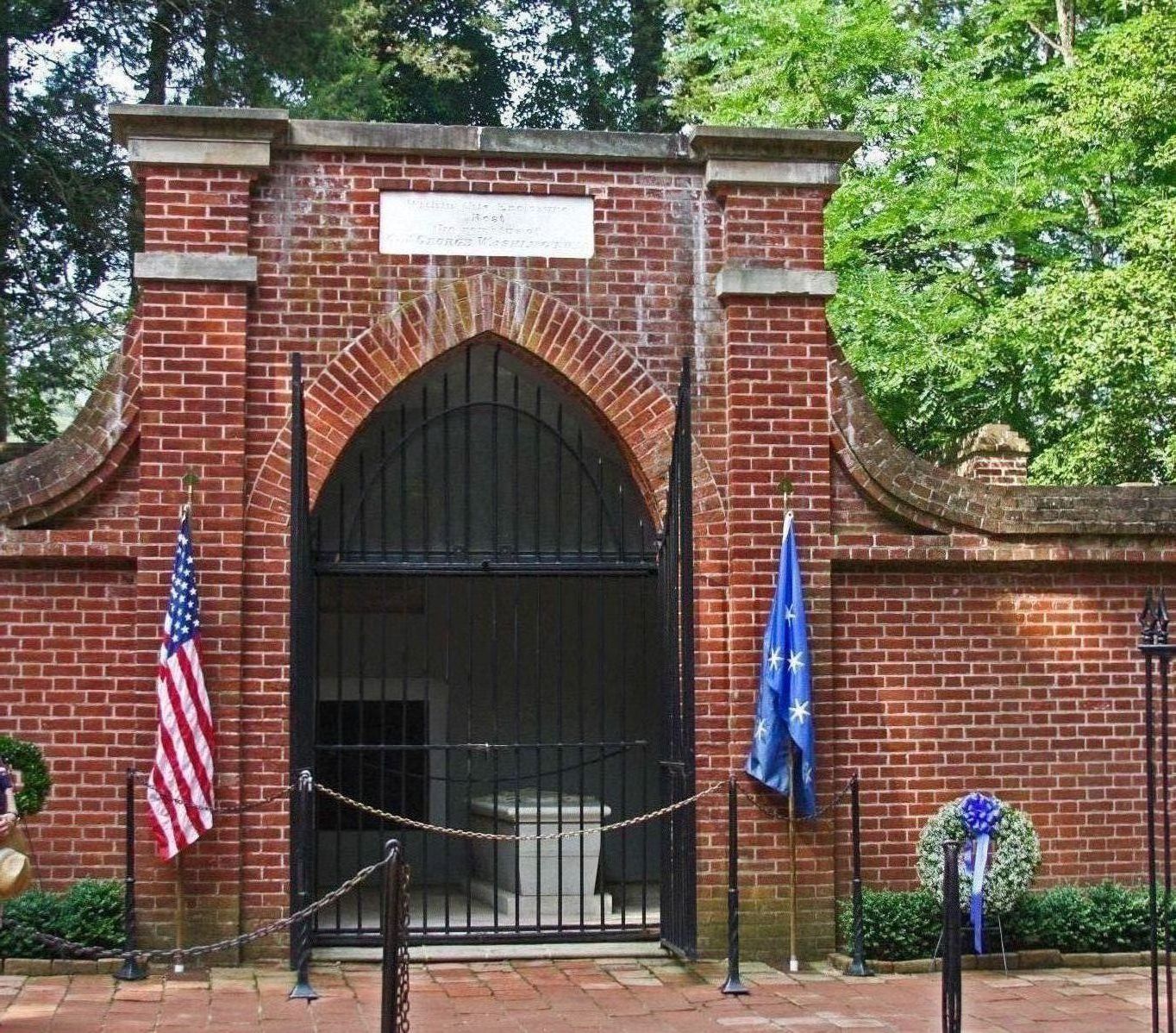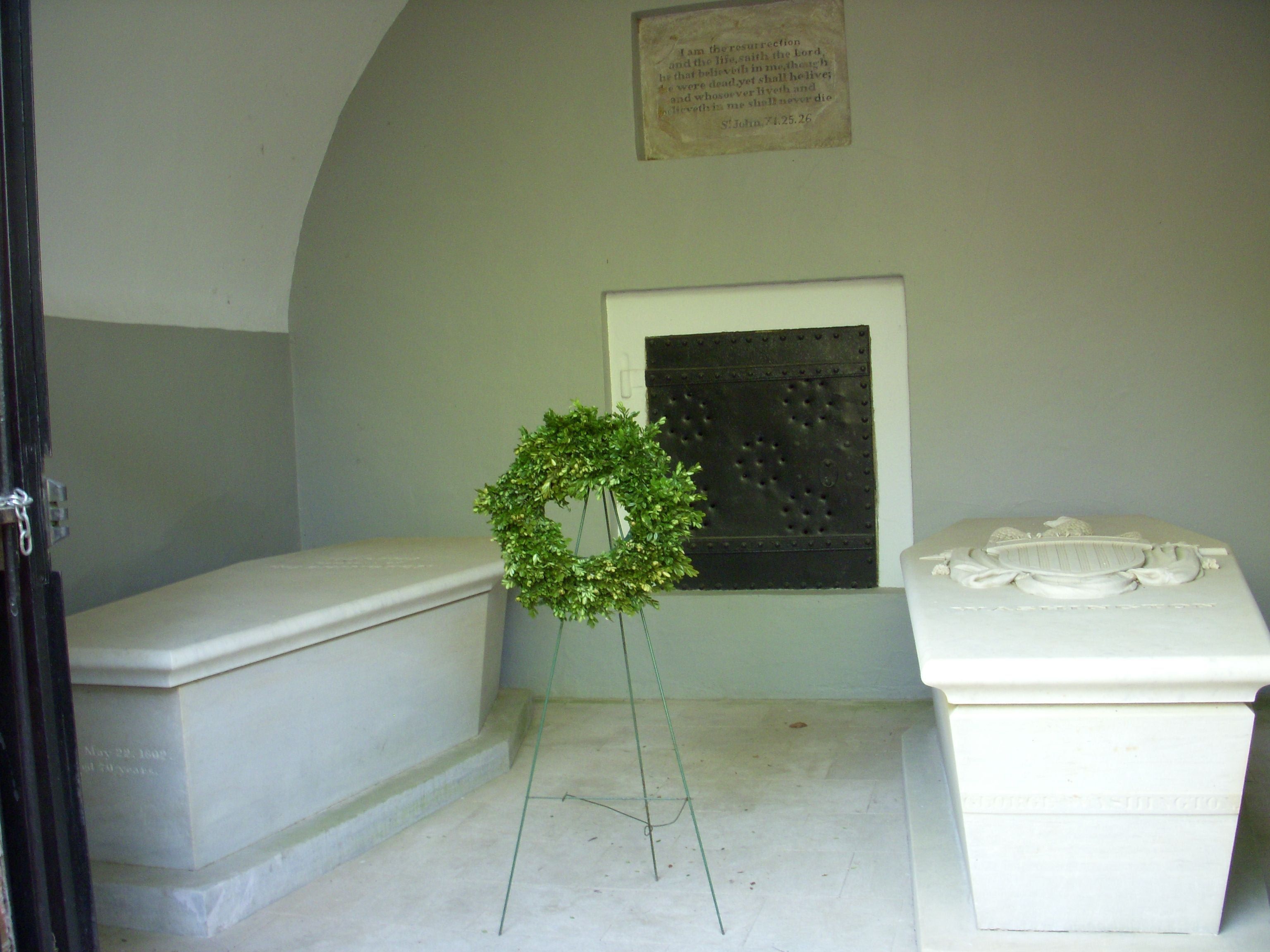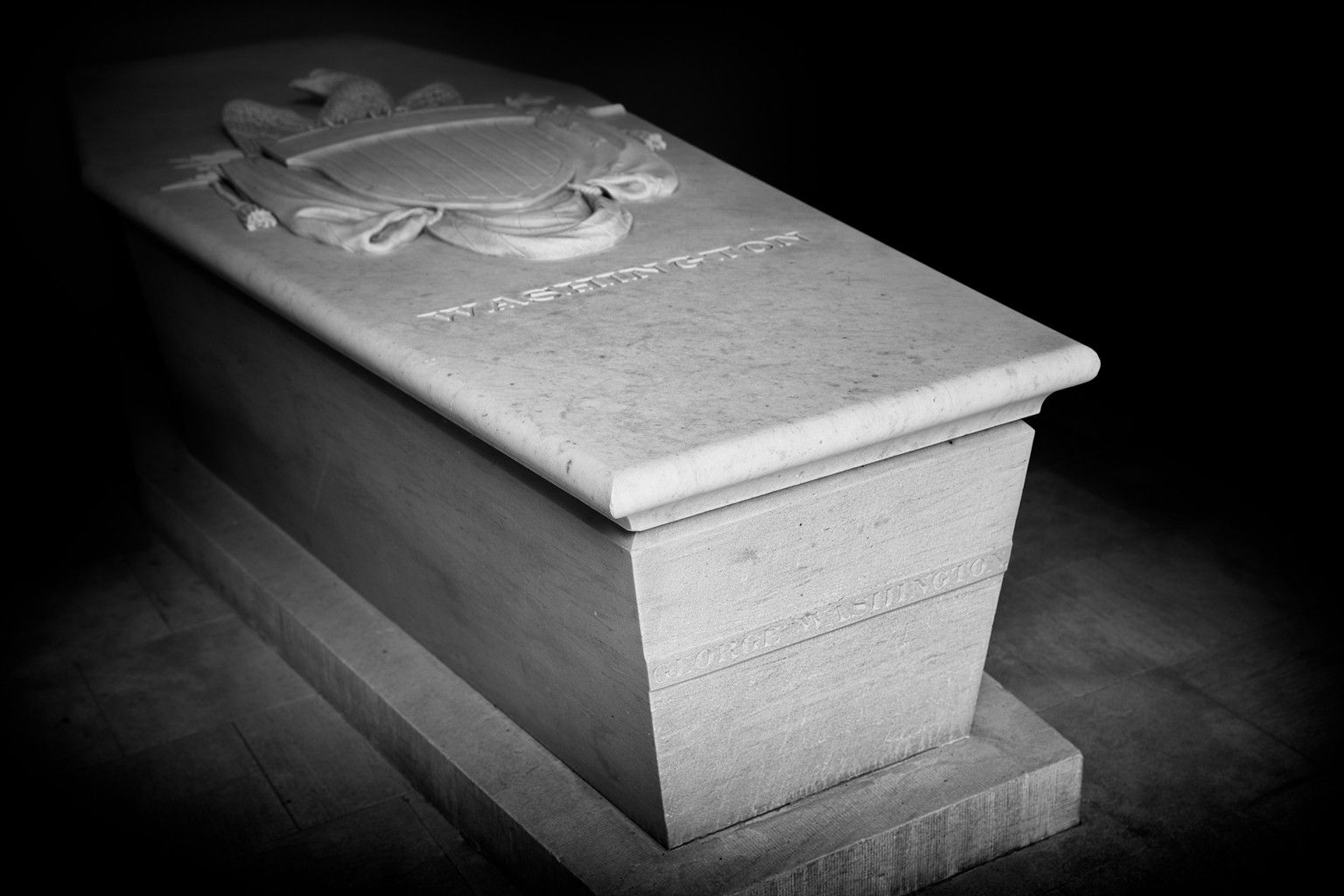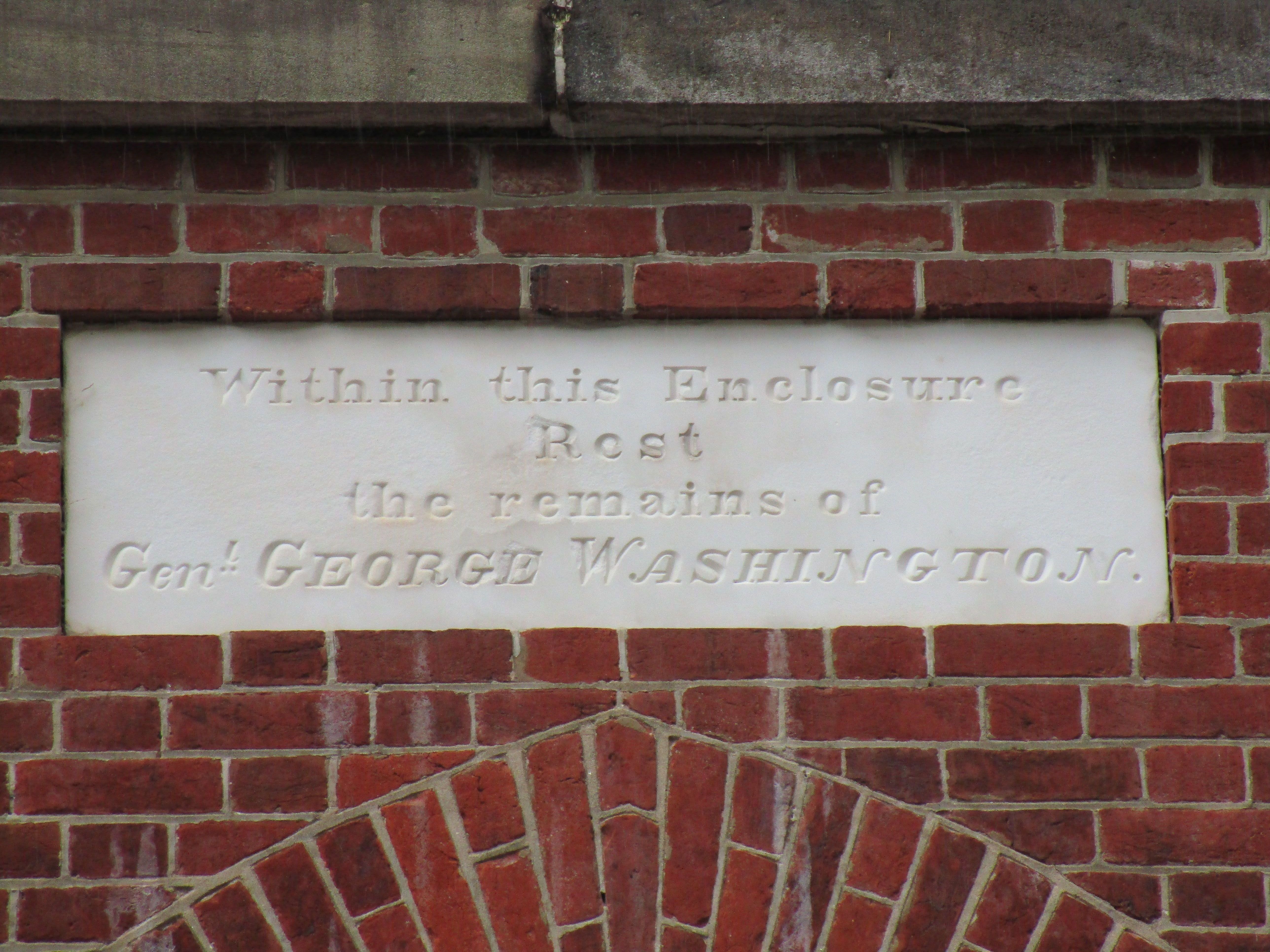First President of the United States. Revolutionary War Continental General. US Founding Father; honored as the "Father of His Country." George Washington was born at Wakefield, the family plantation, in Westmoreland County, Virginia, to Mary Ball Washington and Augustine Washington, a tobacco planter. When he was 11, his father died and there was no money for school. He then lived with an elder half-brother, at Mount Vernon, inheriting the property upon his brother's death in 1752. He taught himself to be a surveyor, and at the age of 17 was appointed county surveyor of the frontier county of Culpeper, Virginia. In 1751, he accompanied his half-brother to Barbados where he contracted smallpox. The following year, he was a major in the Virginia Militia, chosen by Governor Robert Dinwiddie to deliver an ultimatum to the French in the Ohio Valley. His unit engaged in a skirmish with the French, and fell back to the makeshift Fort Necessity, but they soon were forced to surrender, an incident leading to the French and Indian (Seven Years) War. He served as aide for General Braddock during the battle of the Monongahela in 1755. Eventually, recognized for his conduct in battle, he was given command of the entire Virginia Militia. On January 6, 1759, he married the widow, Martha Dandridge Custis. He spent the years between the wars as an experimental farmer at Mt. Vernon. In 1774, the Virginia provincial convention elected him one of the seven delegates to the first Continental Congress. In 1775, the new American Congress appointed him the commander of the newly formed Continental Army. Out gunned and out manned by the best army in the world, Washington favored a strategy of hit-and-run, and actively encouraged privateers to attack British shipping. He was successful at driving the British from Boston in 1776, but was badly defeated in New York later that year. On December 26, 1776, he crossed the Delaware River near Trenton, in a two hour battle, they killed the enemy commander, captured nearly 1,000 prisoners and arms and ammunition, and lost no men themselves, withdrawing to a strong position at Morristown, New Jersey. As a result new recruits signed up and foreign interest ignited. 1777 saw a loss of Philadelphia, a victory at Saratoga, and a loss at Brandywine Creek. Washington took an army beaten, ill housed, and ill fed, with thousands of men barefoot or ill dressed into winter quarters at Valley Forge. A political cabal attempted to replace him, but he crushed the effort decisively. The Marquis de Lafayette, whom Washington had befriended, delivered promised French aid in 1778. The following year, he quartered with his army at Morristown in the worst winter ever recorded, and despite a brief mutiny, held the army together during trying times. With French aid, in August 1781, Washington marched south with his army where he besieged the British at Yorktown. General Cornwallis surrendered to General Washington on October 19. He watched, two years later, as the British finally evacuated New York, where he then took his leave from his officers. He submitted to congress his expense accounts for his service, but asked for no salary, and retired to Mount Vernon. In May 1787, he was one of the delegates from Virginia to attend the Constitutional Convention, of which he was unanimously chosen president. At the close of the convention, he hoped to retire to his farm, but there was no other name ever put forward for the first United States President from any state. On April 16, 1789 he was informed of the honor, he took the oath of office in April 30, 1789 in New York City. His first cabinet included such luminaries as Alexander Hamilton as Secretary of the Treasury, Thomas Jefferson as Secretary of State, Henry Knox as Secretary of War, and Samuel Osgood as Postmaster General. In 1791, a federal territory was established as the site of the new nation's permanent capital and Pierre Charles L'Enfant was named architect in charge of plans for the new federal city. President Washington laid the cornerstone for the Capitol building in 1793. He had served two terms as president, turning down a third, setting an almost unbroken precedent, and returned home to Mount Vernon. He enjoyed fewer than three years of retirement, however, after spending a day riding in very cold weather, he fell ill; his throat became inflamed. He was bled heavily several times, given vinegar and molasses gargles, and a blister was placed on his throat. He asked that he be allowed to go quietly, that no trouble should be taken. He died at age 67, sending the entire country in mourning. He was interred as he wished at Mount Vernon in a hastily constructed brick crypt after an elaborate funeral service was conducted which included cavalry, infantry, cannons, a riderless horse, solemn music, and hundreds of mourners. A passage was read from the Episcopal prayer book, and his body was placed in the crypt. During his life, he had strongly disapproved of the institution of slavery and hoped for some way of abolishing it. He was the only founding father who would order the manumission of slaves held at Mount Vernon in his will. A new mausoleum was constructed some thirty years later, the bodies of George and Martha Washington were moved there. The capital city was named Washington, District of Columbia in his honor in 1800. Today, towns, cities, 30 U.S. counties, schools, and streets honor his name across America. The U.S. state of Washington is named after him along with the city of George in Grant County, Washington. The 555-foot-tall marble obelisk which dominates the Washington skyline was built in his honor. Mount Vernon fell into disrepair until the Mount Vernon Ladies Association was formed to restore and preserve the site. Washington's home is now open to the public.
*George Washington was born on February 11, 1731, in the then-used Julian calendar. In 1752, the Gregorian calendar was adopted in America which moved Washington's birthday to February 22, 1732.
First President of the United States. Revolutionary War Continental General. US Founding Father; honored as the "Father of His Country." George Washington was born at Wakefield, the family plantation, in Westmoreland County, Virginia, to Mary Ball Washington and Augustine Washington, a tobacco planter. When he was 11, his father died and there was no money for school. He then lived with an elder half-brother, at Mount Vernon, inheriting the property upon his brother's death in 1752. He taught himself to be a surveyor, and at the age of 17 was appointed county surveyor of the frontier county of Culpeper, Virginia. In 1751, he accompanied his half-brother to Barbados where he contracted smallpox. The following year, he was a major in the Virginia Militia, chosen by Governor Robert Dinwiddie to deliver an ultimatum to the French in the Ohio Valley. His unit engaged in a skirmish with the French, and fell back to the makeshift Fort Necessity, but they soon were forced to surrender, an incident leading to the French and Indian (Seven Years) War. He served as aide for General Braddock during the battle of the Monongahela in 1755. Eventually, recognized for his conduct in battle, he was given command of the entire Virginia Militia. On January 6, 1759, he married the widow, Martha Dandridge Custis. He spent the years between the wars as an experimental farmer at Mt. Vernon. In 1774, the Virginia provincial convention elected him one of the seven delegates to the first Continental Congress. In 1775, the new American Congress appointed him the commander of the newly formed Continental Army. Out gunned and out manned by the best army in the world, Washington favored a strategy of hit-and-run, and actively encouraged privateers to attack British shipping. He was successful at driving the British from Boston in 1776, but was badly defeated in New York later that year. On December 26, 1776, he crossed the Delaware River near Trenton, in a two hour battle, they killed the enemy commander, captured nearly 1,000 prisoners and arms and ammunition, and lost no men themselves, withdrawing to a strong position at Morristown, New Jersey. As a result new recruits signed up and foreign interest ignited. 1777 saw a loss of Philadelphia, a victory at Saratoga, and a loss at Brandywine Creek. Washington took an army beaten, ill housed, and ill fed, with thousands of men barefoot or ill dressed into winter quarters at Valley Forge. A political cabal attempted to replace him, but he crushed the effort decisively. The Marquis de Lafayette, whom Washington had befriended, delivered promised French aid in 1778. The following year, he quartered with his army at Morristown in the worst winter ever recorded, and despite a brief mutiny, held the army together during trying times. With French aid, in August 1781, Washington marched south with his army where he besieged the British at Yorktown. General Cornwallis surrendered to General Washington on October 19. He watched, two years later, as the British finally evacuated New York, where he then took his leave from his officers. He submitted to congress his expense accounts for his service, but asked for no salary, and retired to Mount Vernon. In May 1787, he was one of the delegates from Virginia to attend the Constitutional Convention, of which he was unanimously chosen president. At the close of the convention, he hoped to retire to his farm, but there was no other name ever put forward for the first United States President from any state. On April 16, 1789 he was informed of the honor, he took the oath of office in April 30, 1789 in New York City. His first cabinet included such luminaries as Alexander Hamilton as Secretary of the Treasury, Thomas Jefferson as Secretary of State, Henry Knox as Secretary of War, and Samuel Osgood as Postmaster General. In 1791, a federal territory was established as the site of the new nation's permanent capital and Pierre Charles L'Enfant was named architect in charge of plans for the new federal city. President Washington laid the cornerstone for the Capitol building in 1793. He had served two terms as president, turning down a third, setting an almost unbroken precedent, and returned home to Mount Vernon. He enjoyed fewer than three years of retirement, however, after spending a day riding in very cold weather, he fell ill; his throat became inflamed. He was bled heavily several times, given vinegar and molasses gargles, and a blister was placed on his throat. He asked that he be allowed to go quietly, that no trouble should be taken. He died at age 67, sending the entire country in mourning. He was interred as he wished at Mount Vernon in a hastily constructed brick crypt after an elaborate funeral service was conducted which included cavalry, infantry, cannons, a riderless horse, solemn music, and hundreds of mourners. A passage was read from the Episcopal prayer book, and his body was placed in the crypt. During his life, he had strongly disapproved of the institution of slavery and hoped for some way of abolishing it. He was the only founding father who would order the manumission of slaves held at Mount Vernon in his will. A new mausoleum was constructed some thirty years later, the bodies of George and Martha Washington were moved there. The capital city was named Washington, District of Columbia in his honor in 1800. Today, towns, cities, 30 U.S. counties, schools, and streets honor his name across America. The U.S. state of Washington is named after him along with the city of George in Grant County, Washington. The 555-foot-tall marble obelisk which dominates the Washington skyline was built in his honor. Mount Vernon fell into disrepair until the Mount Vernon Ladies Association was formed to restore and preserve the site. Washington's home is now open to the public.
*George Washington was born on February 11, 1731, in the then-used Julian calendar. In 1752, the Gregorian calendar was adopted in America which moved Washington's birthday to February 22, 1732.
Bio by: Keith Fitzgerald
Inscription
Within this Enclosure
Rest
the remains of
Genl. GEORGE WASHINGTON.
I am the resurrection
and the life, saith the Lord,
he that believeth in me, though
he were dead, yet shall he live;
and whosoever liveth and
believeth in me shall never die
St. John, XI.25.26
WASHINGTON
Gravesite Details
Buried at his home, Mount Vernon.
Family Members
Advertisement
See more Washington memorials in:
Records on Ancestry
Sponsored by Ancestry
Advertisement













